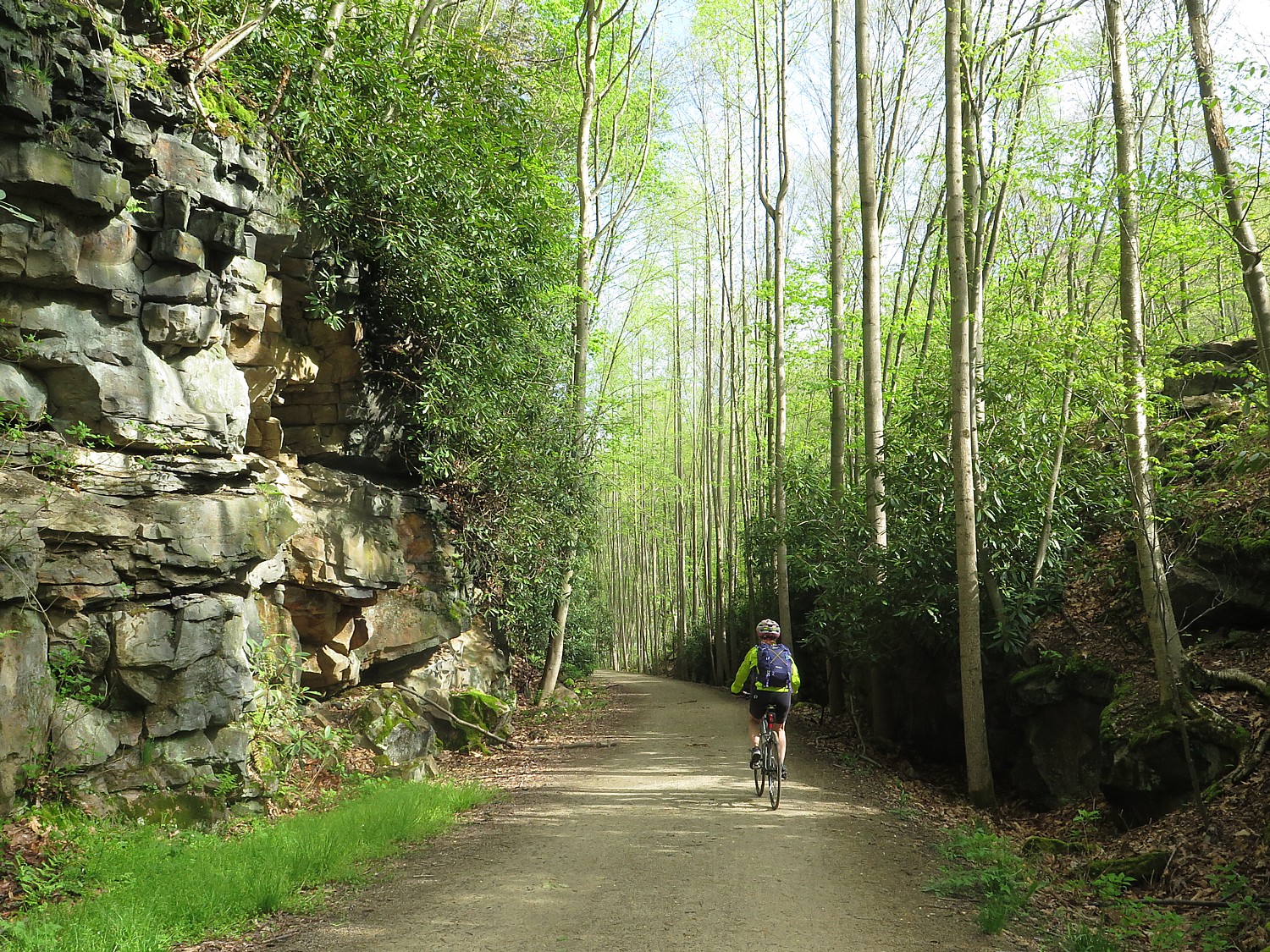
By Karen Rubin, Travel Features Syndicate, goingplacesfarandnear.com
(After meeting up at Homestead, PA and bussing to the start of our Rails-to-Trails Conservancy’s first springtime Sojourn, a three-day biketour on the Great Allegheny Passage, we start off Day 2 in Harnedsville and ride 33.5 miles to Adelaide. Our adventure continues.)
Yesterday, our first day on the Rails-to-Trails Conservancy’s Sojourn bike tour on the Great Allegheny Passage was mostly under overcast skies and rainy (fortunately after we finished the ride) but today is crystal clear, glorious spring day. This is Rails-to-Trails Conservancy’s first spring sojourn supported bike tour – these sojourns are designed to showcase rail-trails, transform trail users into advocates and show the value for economic development for trail networks nationwide – and we soon realize the advantages of a spring ride: The leaves are not yet full on the trees so we can see through to the vistas, and have a soft delicacy that makes you think of Chinese painting. The blossoms are out making for gorgeous pastel colors. Butterflies seem to be everywhere, but the pesky insects haven’t yet appeared. There are scores of waterfalls from the spring melt. The weather is cool, sparkling, the air so and pure it is like a narcotic.
Our group is only 85 riders (owing in part to the fact the ride started on a workday/school day and finishes on Mothers Day). Nonetheless, we come from dozens of states. A woman from Colorado observes that the hardwood trees which line the path, some impossibly tall and straight like tent-poles, create a canopy effect which she doesn’t have. Today, the trees seem to glow in yellow sunlight.
Our ride today from Harnedsville, where we camped on the grounds of the Turkey Foot Valley School, is 33.5 miles to Adelaide, almost entirely downhill. We will drop 500 feet in elevation, overall, and we continue to marvel how well maintained the trail is – wide, flat, crushed gravel.
We ride over a bridge over the Casselman River, then another bridge over the Youghiogheny River, then pass under the highway bridge at Confluence where there is a fisherman casting for trout.
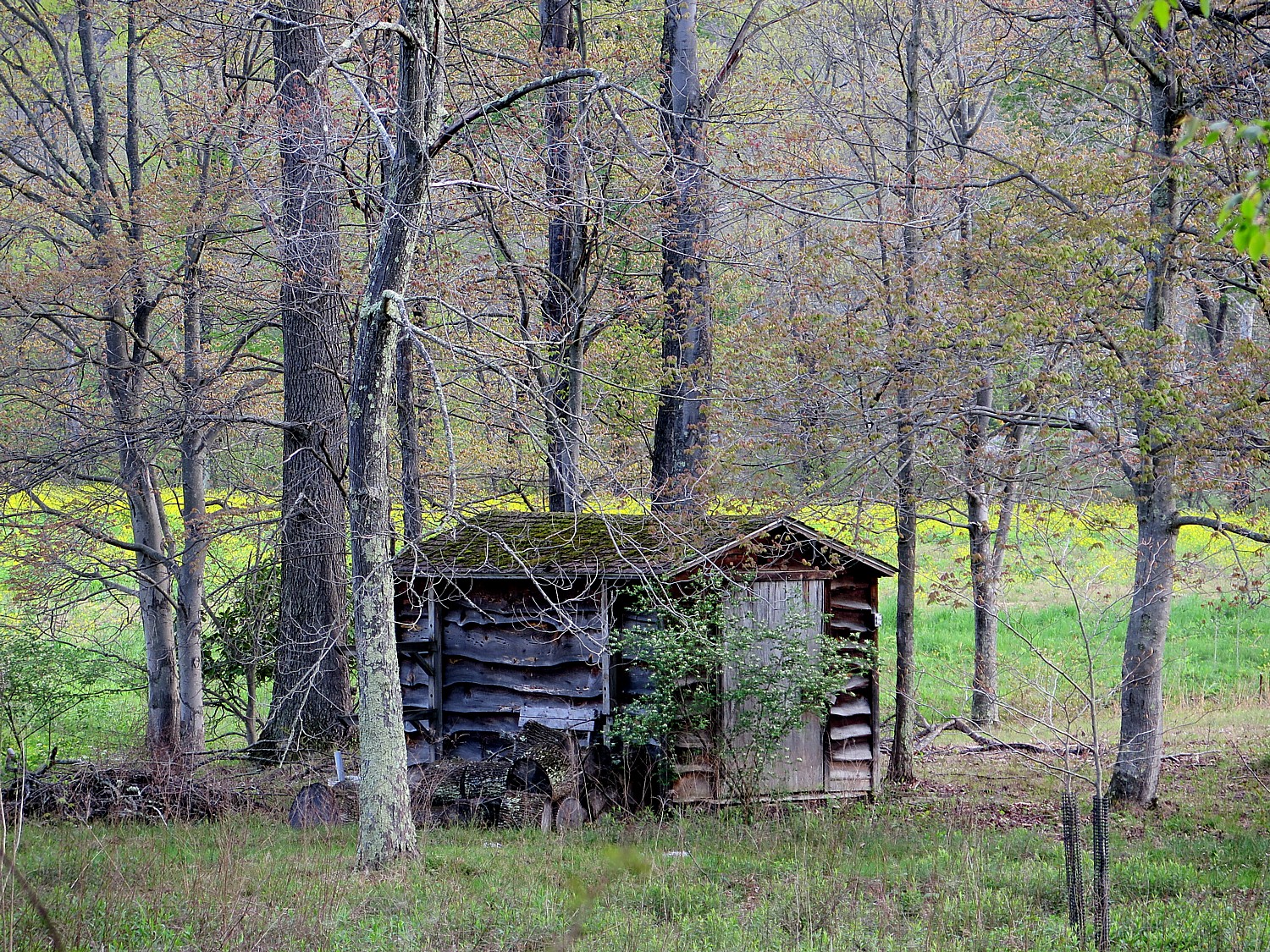
The trail is absolutely stunning. On one side, you see wonderful rock formations – signposts that explain the geology and point to a seam of coal (I find pieces of coal along the path).
Much of the ride today is through the utterly gorgeous Ohiopyle State Park, and a highlight comes at the town of Ohiopyle, a hub for visiting the park. A short ride off the trail are the 20’ waterfalls across the width of the Youghiogheny River (no luck spotting the Youghiogheny Monster). This is a rafting and kayaking center and for excellent reason– a class 5 river at the top, a class 3 below the falls.
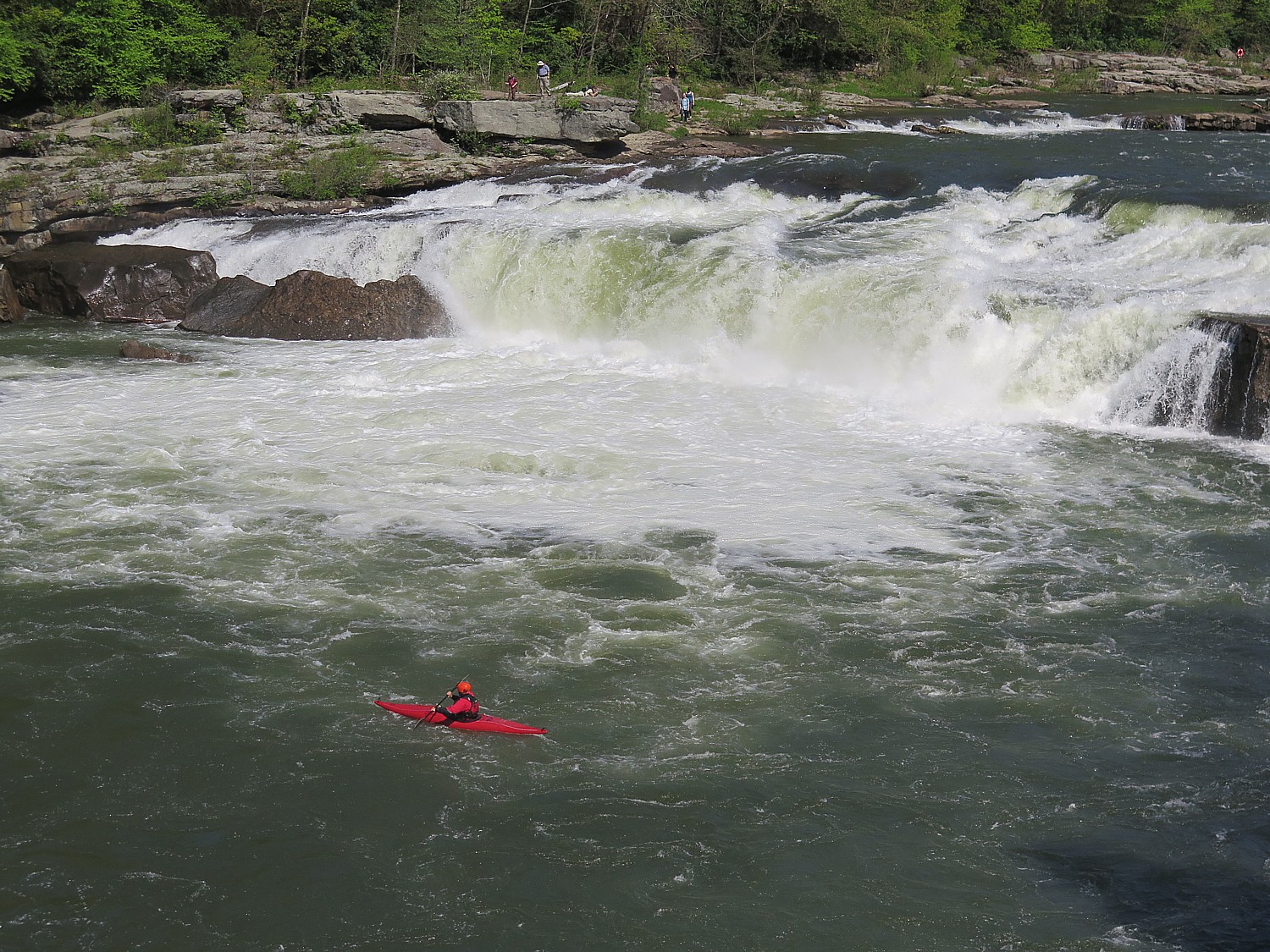
The people are duly proud of their new Visitors Center – an architectural gem wonderfully positioned to let you look out over the falls, while in the lower level, offering excellent exhibits about the area – how water power was central to its development – with interactive exhibits that will engage children.
Wagons and settlers came through on the National Road in 1818. Ohiopyle, itself, was settled in 1891, when it was known as Falls City, and its economy revolved around these rushing waters. The area has always drawn tourists because of the natural beauty. Among the early visitors: Thomas Edison, Henry Ford and Harvey Firestone came in a camper in 1918. Visiting wasn’t cheap – an exhibit notes that a family spent $20 on accommodations and $11 on tolls, at a time when the average worker took home just $11 a month.
But by 1900, the area was already polluted by coal production and lumbering.
Today, though, the natural beauty has been reclaimed. Ohiopyle is at the hub of the 20,000 acre Ohiopyle State Park which features utterly stunning sites including the Youghiogheny River Gorge, Ohiopyle Falls, Cucumber Falls and Ferncliff Peninsula (724-329-8591, [email protected].)
The town now has wonderful shops that cater to visitors, outdoor recreation.
Nearby is Fallingwater, a home designed by architect Frank Lloyd Wright in 1937 for the wealthy Pittsburgh department store magnate, Edgar Kaufmann, Sr. (www.fallingwater.org/2/visit), and Kentuck Knob, another Wright work. (www.friendsofohiopyle.info, 224-329-8591).
The trail from Confluence to Ohiopyle was the first completed section of the GAP – in 1986 – and it is gorgeous.
Riding out of Ohiopyle, I see the Great Gorge hiking trail which goes to Cucumber Falls. I am tempted but I am not sure how far the hike is and how long it will take (next time, I will).
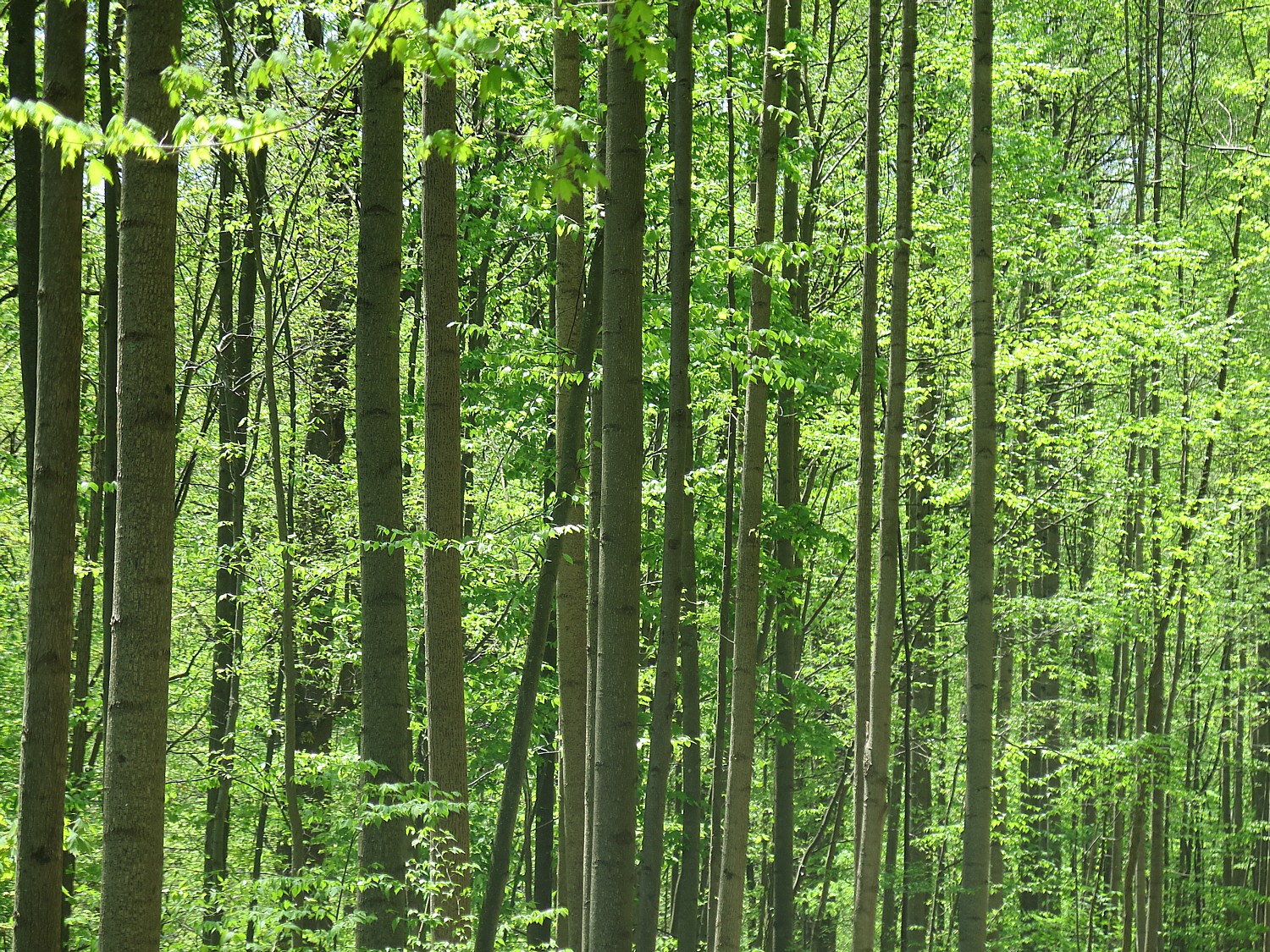
Continuing on, there are wonderful hiking trails, and we take a short one just across from where we have our rest stop which is supposed to take us to a view over the Youghiogheny falls. The view isn’t so great, but surrounded by wilderness, it is easy to imagine this landscape when the Indians were the main inhabitants.
We come to a new connector to the Sheepskin Trail, a 34-mile “missing link” between the Great Allegheny Passage, the Potomac Heritage National Scenic Trail and the West Virginia Mon River Trail System.
We ride the new trail from the GAP for 2 miles into the town Dunbar (we had to ride over a rocky half-mile section that is still being finished by the railroad).
Bike-Trail, Trump Sculpture Breathe New Life into Dunbar
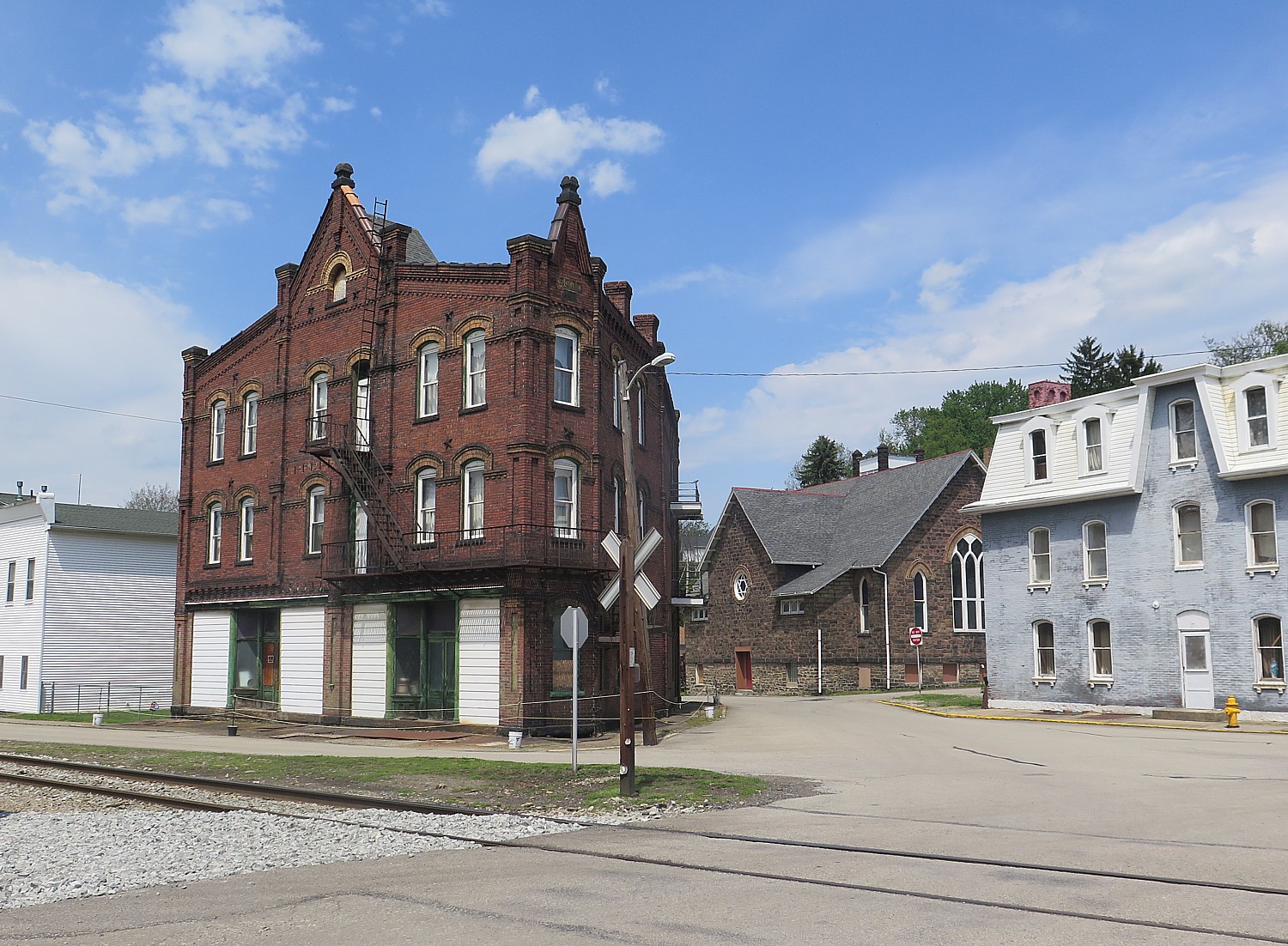
Dunbar is the poster child for a town blighted by the loss of industry and epochal changes in technology, but here you also witness the beginning of a revitalization largely because of the rail-trail. But its history has always been that way: new technology and new industry that brings new people, and funds new structures and institutions. The entirety of the Industrial Revolution, supplanting the agrarian economy, was that way.
Settled in the 1790s, Dunbar was originally called Frogtown. It was renamed for Col. Thomas Dunbar who fought in the French & Indian War along with General Braddock, and helped retake Fort DuQuesne (now Fort Pitt) in Pittsburgh, taking from the French and important hub from which it wanted to control its colonial empire (as I have learned from my visit to the Fort Pitt Museum there, www.heinzhistorycenter.org/fort-pitt/).

In 1793, Isaac Meason set into motion an industrial revolution in Dunbar when he opened his Union Furnace #1 (I later see a street named for Meason). This became Dunbar’s lifeblood over the next century. One of the coke ovens now has a place in the town park, alongside a creek, adjacent to the railroad tracks. All around the town are the brick buildings that are testament to the prosperity – at one time, there were five banks. From the time of Meason’s first iron furnace through the 1950s, Dunbar was home to Dunbar Furnace, Pennsylvania Wire Glass Company (it was a leading glass making center), Bluestone quarry, among others, plus several mines and coke oven sites. Today, we see some wonderful historic buildings from the turn of the last century, such as the George H. Swearingen Store (1901) just across from the railroad tracks.
Except for the little league baseball game going on and the activity at the Historical Society, the town is eerily vacant – almost like a movie set.
The rail-trail is breathing new life into towns like Dunbar. Last year, RTC centered its Sojourn ride around Dunbar, a sleepy town of 1900 people, camping overnight in the Coke Oven town park, and all 300 riders, who hailed from 36 states, were personally greeted by the mayor. He appreciated what this event could mean to its economic development (the ride alone injected $245,000 into the local economy.

This year, there is a major new attraction in Dunbar which really will draw people: an 8 x 5 foot, 2,800-pound glass sculpture, “Seated Torso,” by French artist Pascal, who visited Dunbar in 1961 when it was still a major glass-making center, as the Pennsylvania Wire Glass Co. was going bankrupt and closing down, donated to the tiny town by none other than Donald J. Trump.
The Dunbar glass was unusual because it was so tempered, it resisted splintering when struck with a hammer, and Pascal could attempt what no one else had accomplished, sculpt glass. She purchased a 4,000-pound hunk of the glass, according to an account published in Triblive.com.
“Pascal spent 15 to 20 years carving ‘Seated Torso,’ [her daughter Jill] Petty said. It was purchased in 1994 for $3 million by billionaire John Kluge, who at the time was considered one of the richest men in America.
“Kluge, who died in 2010, displayed the sculpture in a domed rotunda at his Charlottesville, Va., estate. When tycoon Donald Trump acquired the estate for a winery, he needed the space for other purposes, and a search was on for a home for the piece, said Kerry Woolard, general manager of Trump Winery.”
So, the Trump people decided to return the sculpture to where the glass had originated. Then it was up to the town to raise the tens of thousands of dollars to build a place to display the piece and get it to Dunbar, including $16,000 to remove the roof from the domed structure in Virginia in order to extricate it, Trib Live’s Liz Zemba reported.
(I have no doubt Donald Trump took a $3.5 million tax deduction for his largesse.)
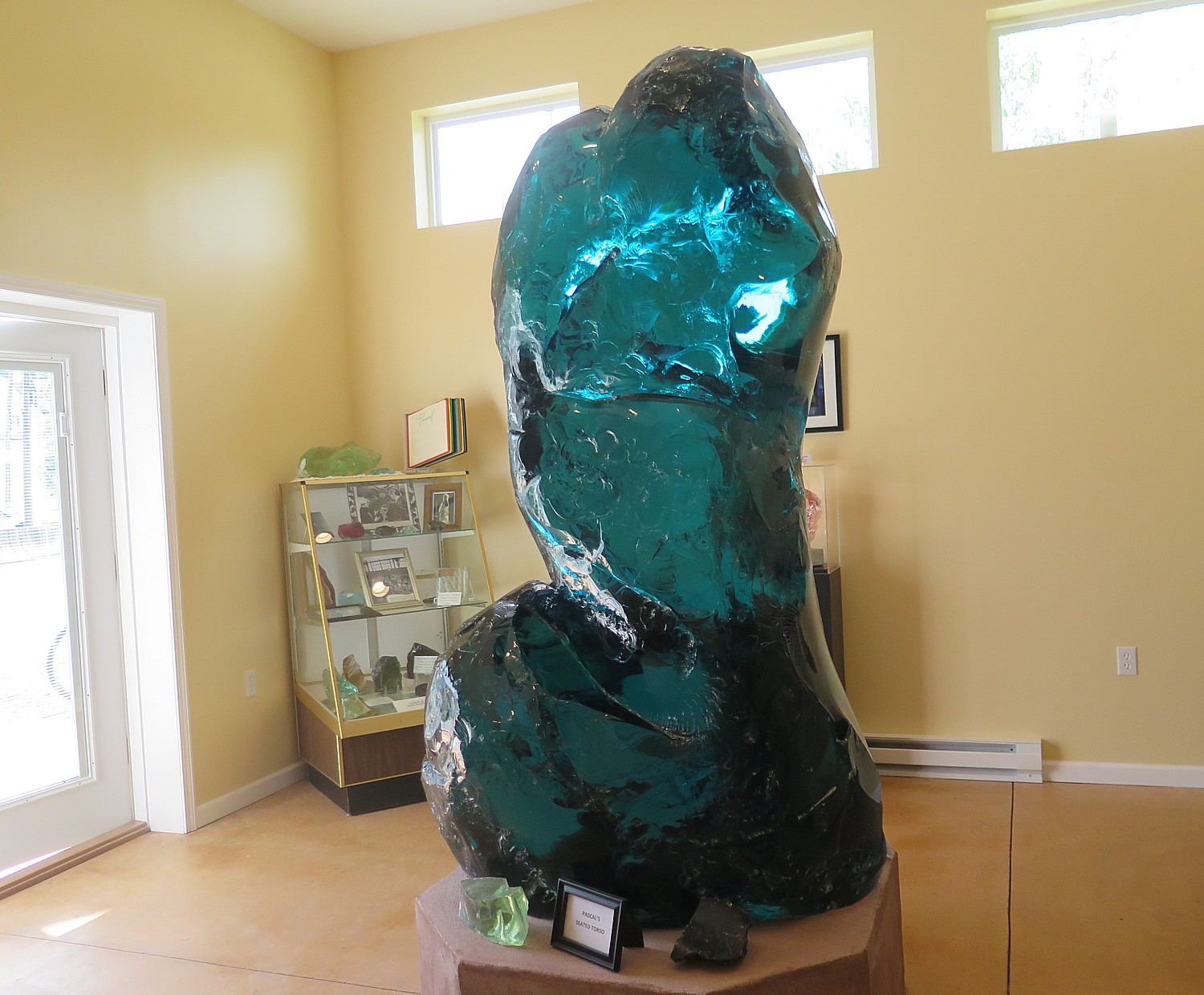
We visit on the day that the Dunbar Historical Society is unveiling the new space, the Pascal Annex, that houses the Seated Torso and offers quite a fine exhibit of the artist, as well as a framed photo and letter from Donald J. Trump. We are also treated to a bottle of 2008 vintage Trump “red wine.” (Dunbar Historical Society Center, www.dunbarhistoricalsociety.com, 724-277-8800).
It is fascinating to see the contrast between Dunbar and Connellsville, just a few miles away on the trail.
Connellsville is located on the banks of the Youghiogheny River – new, beautiful homes have been built between the bike trail (once the railroad) and the river.
Connellsville was once known as the “coke center of the world” – for the coke ovens that heated the coal to produce steel. In the early 1900s, beehive ovens “lit up the hillsides” (you can see ovens between miles 93 and 94) and there would have been rail lines and streetcars crisscrossing the city.
We pass the Youghiogheny Opalescent Glass Factory, with painted silos (part of the public art program along the rail trail that we have been enjoying).
The trail takes us through the West Side (formerly the town of New Haven). In the renovated Yough River Park, where we have our support stop. We pass by a re-creation of Col. William Crawford’s 1766 Cabin and Spring House, and one of 16 Heritage Trail signs that you can follow on a two-mile walk or ride to explore the city – another indicator of pride people have in their heritage.
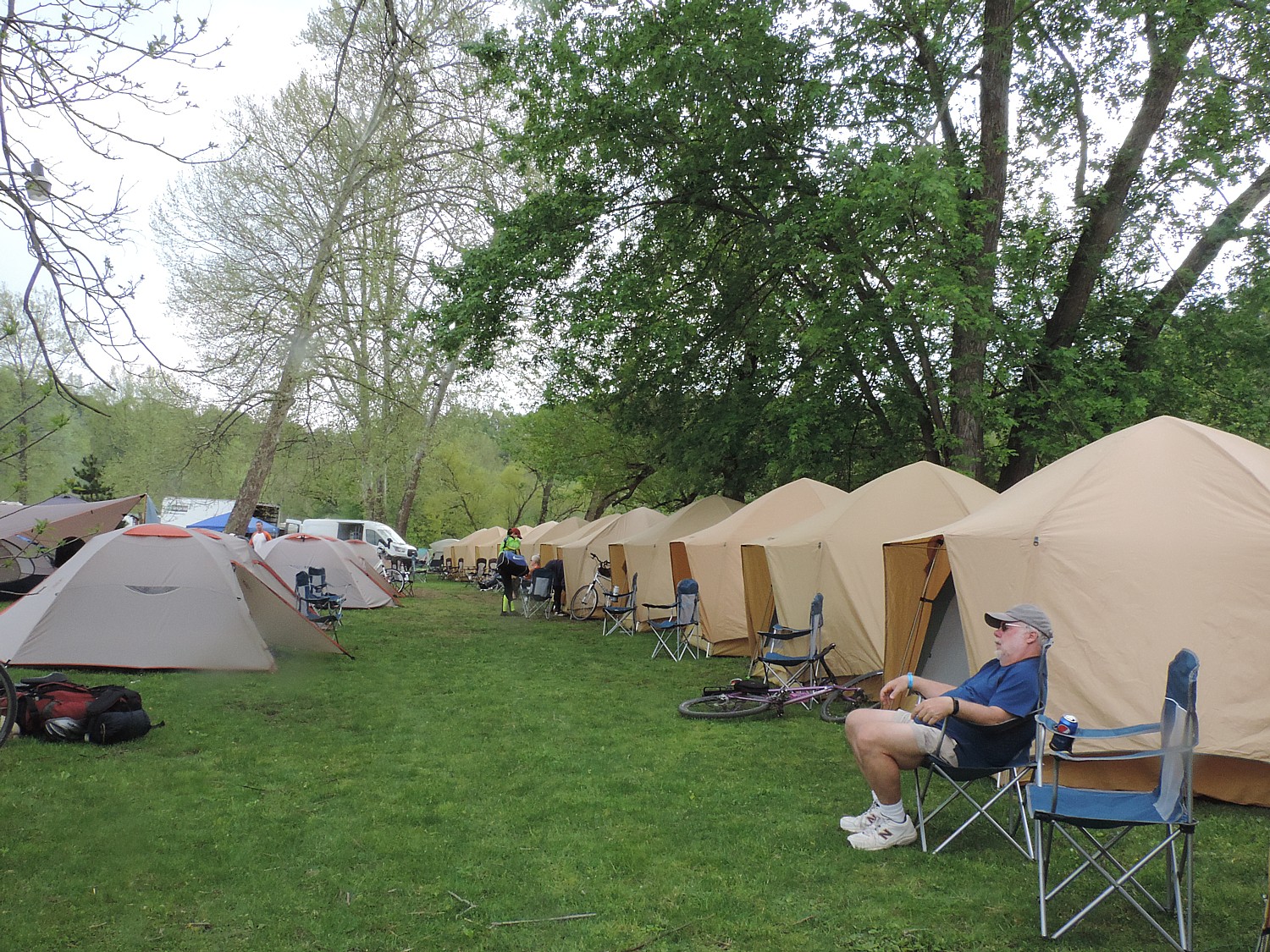
We come to the KOA at River’s Edge- a camping resort that borders both the rail-trail and the river, which seems luxurious to us (there are inner tubes available and other water sports equipment, including a pool which is not yet open for the season. We enjoy a BBQ dinner under a pavilion and the other amenities of a camping resort. It is Saturday night and the resort offers a DJ that plays until 10 pm.
For more information about Rails-to-Trails Conservancy rides and to register, visit railstotrails.org/sojourn.
Next: Great Allegheny Passage bike tour takes us back to Homestead’s turbulent industrial history
See also:
Rails-to-Trails Conservancy Takes Cyclists on Sojourn on Great Allegheny Passage
One Day, Two Nights in Pittsburgh: From Grey to Green, A Proud City Revitalized
36 Hours in Pittsburgh: Point State Park Proves Highlight of Walking Tour
36 Hours in Pittsburgh: Andy Warhol Museum is at Center of Revitalized City
36 Hours in Pittsburgh: Strip District Exemplifies City’s Past, Future
____________________
© 2016 Travel Features Syndicate, a division of Workstyles, Inc. All rights reserved. Visit goingplacesfarandnear.com and travelwritersmagazine.com/TravelFeaturesSyndicate/. Blogging at goingplacesnearandfar.wordpress.com and moralcompasstravel.info. Send comments or questions to [email protected]. Tweet @TravelFeatures. ‘Like’ us at facebook.com/NewsPhotoFeatures
